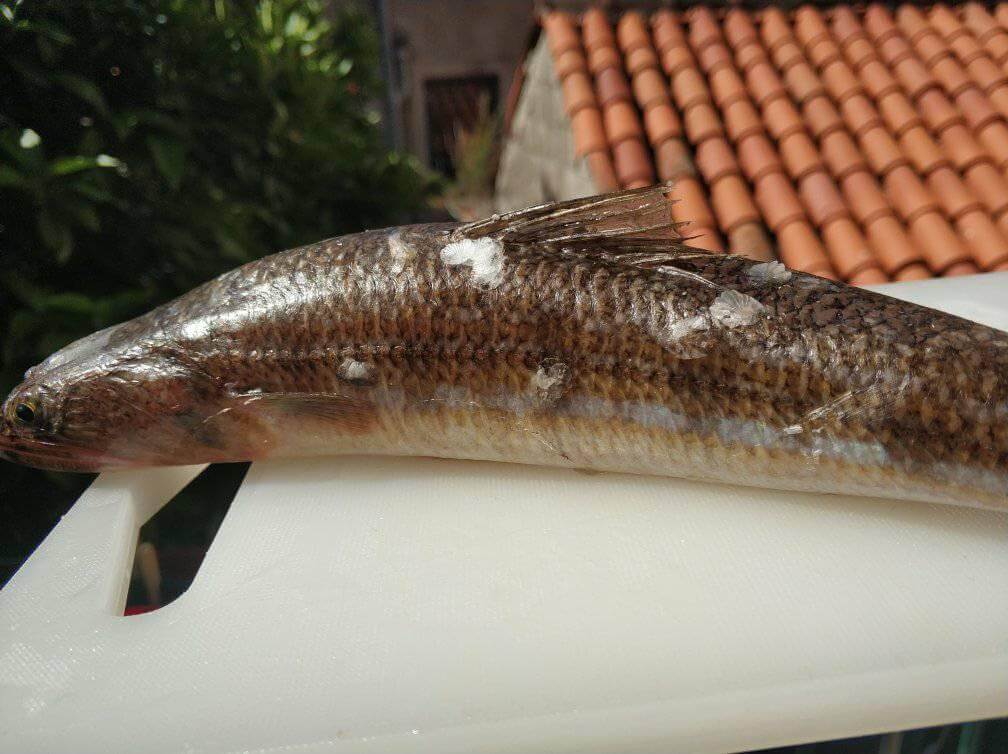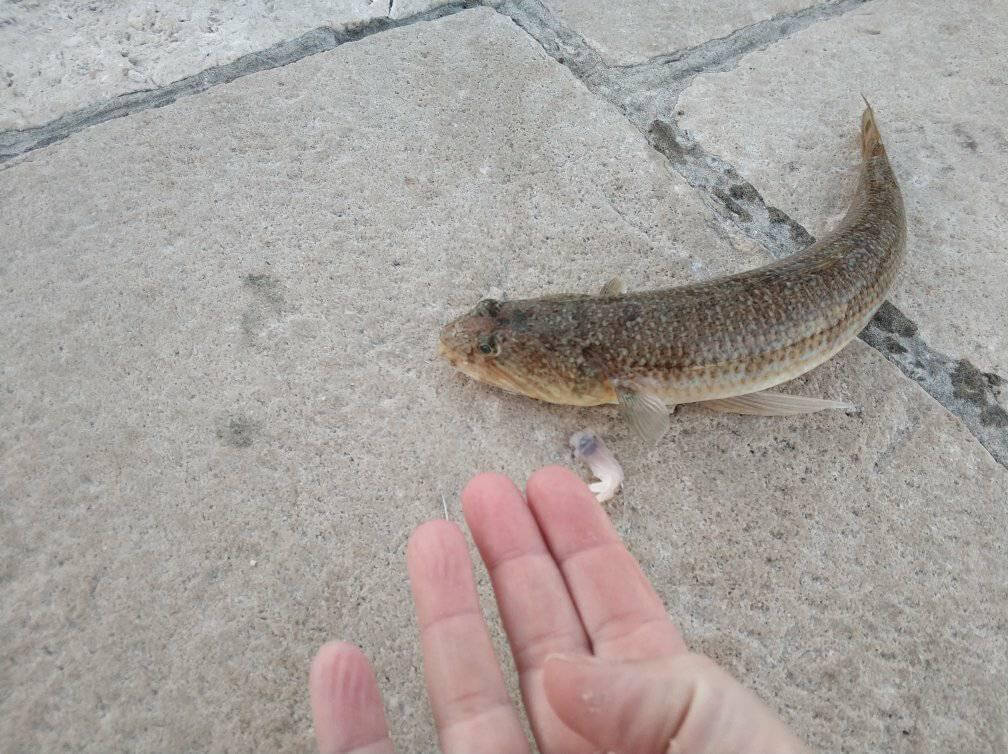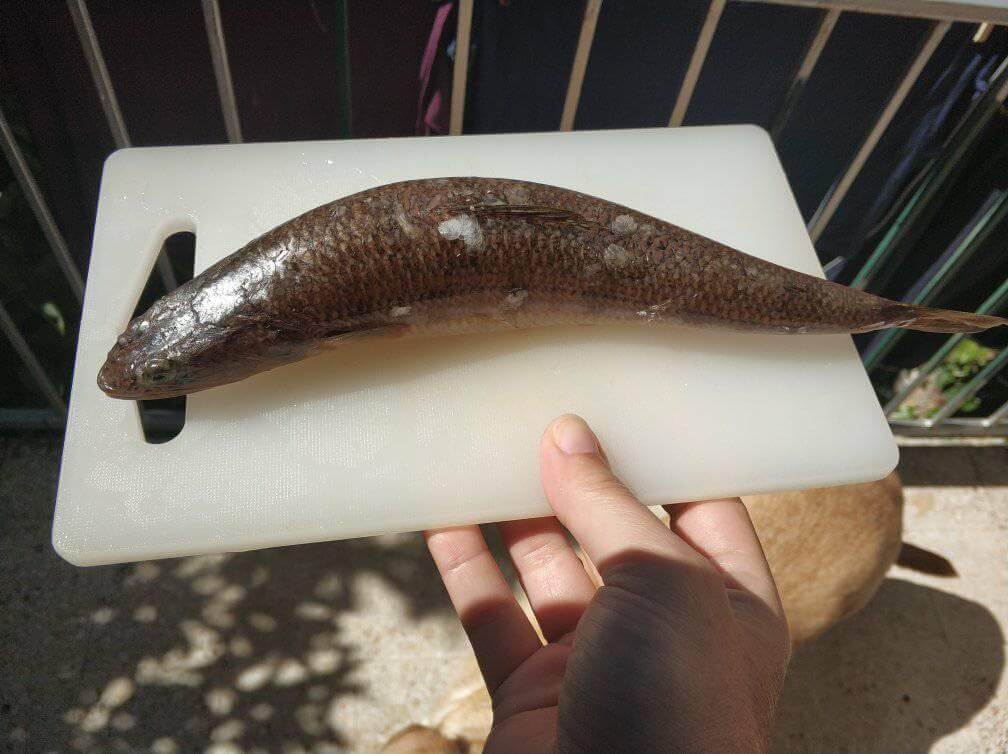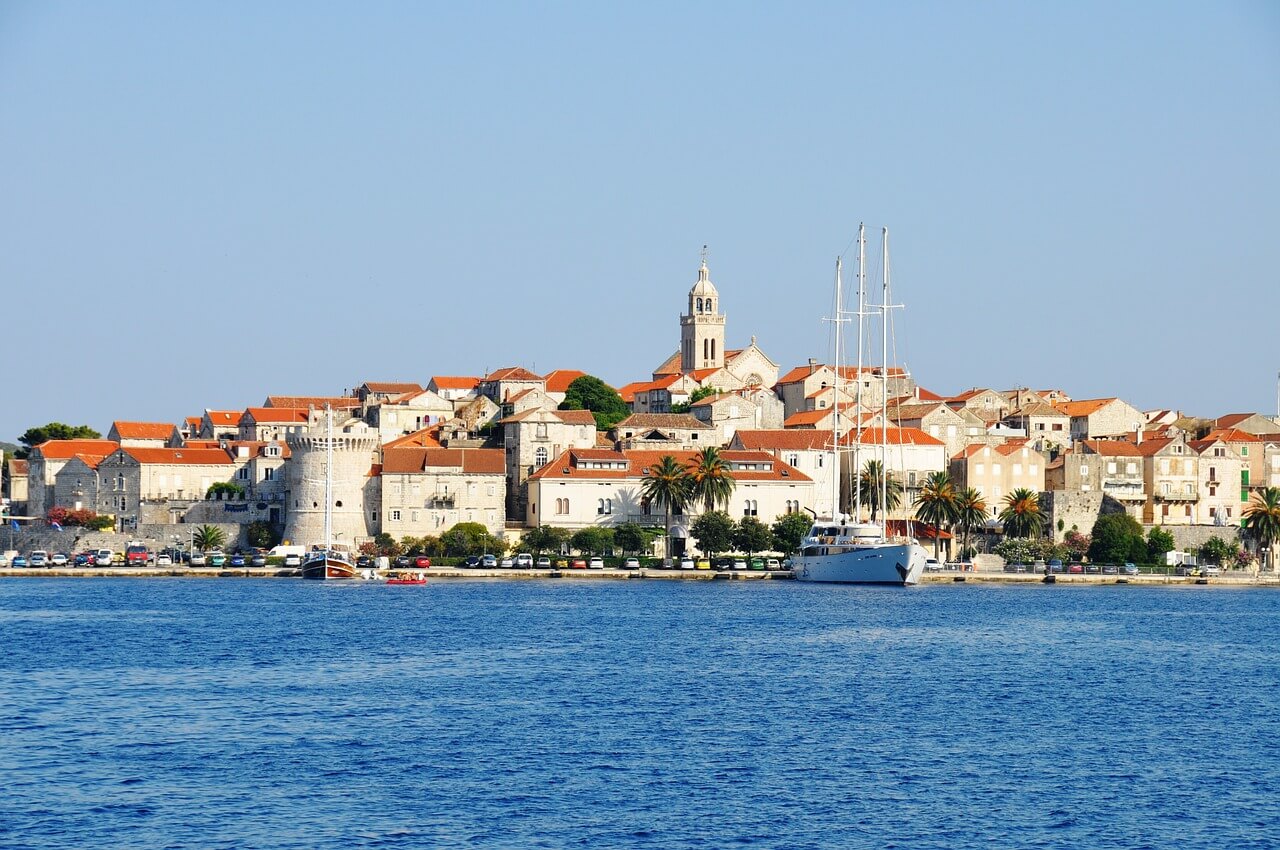Two Adult Noble Pen Shells Found in the Sea Near Rovinj
June 14, 2022 - In addition to two small noble pen shells, two adult noble pen shells were found in the sea near Rovinj. It is an endemic species of great importance to the marine ecosystem. In the last few years, newly discovered parasites and bacteria have spread through the Mediterranean, bringing this shellfish to its most difficult period in history.
Dr. sc. Andrej Jaklin from the Center for Marine Research of the Ruđer Bošković Institute in Rovinj says that they are in excellent condition, they have grown somewhere between 3-4 cm since last year and they react normally, writes HRT.
Periscopes are on the verge of extinction
Along with them, two small periscopes kept in the Pula Aquarium were found on collectors placed nearby. According to Aleksandra Bel Dajaković, head of the professional department of Aquarium Pula, they are in strictly controlled conditions, where in reality every parameter is controlled and they take care of them every day and watch how they progress.
This noble shellfish can grow up to one and a half meters, weigh over 3 kilograms and live up to 50 years, and is of great importance to the marine ecosystem.
"It is the largest Mediterranean shellfish that filters large amounts of water daily and thus contributes to the purification of water, eliminating excess organic matter from the water.", says Dr. sc. Andrej Jaklin.
The noble pen shells have been hit in the last 4 years by a plague of pathogens that have led them to almost extinction.
Dangers of anchors and curious tourists
In addition to searching the seabed and finding living individuals to preserve this species, various protection actions have been initiated. Protective cages are set up if it is near an anchor or there is an octopus threat.
Various education initiatives can raise public awareness in order to preserve the world of the noble pen shell - the largest shellfish in the Mediterranean.
For more, check out our lifestyle section.
Journalist Clickbait Victim: The Curious Case of Mystery Fish on Korčula
June 2, 2021 - When TC editor Iva Tatić caught the fish nobody could identify, TCN reporter Ivor Kruljac jumped to action in the hope he will find a marine life scoop. But after the dramatic realization that Atlantic lizardfish is nothing spectacular, he became a journalist clickbait victim. Meet the mystery fish on Korčula.
It was early evening between 7 pm-8 pm on the eastern Korčula coastline on May 28. After a long week of handling the Total Croatia site, TC editor Iva Tatić decided to chill and went fishing. Instead of managing the multilingual site that brings you the best tips on how to travel and enjoy Croatia, she must've been happy with the idea she can enjoy in Croatia herself, as she was preparing two hooks – one with a squid and the other with the piece of bread. Marine life must be very humble cause instead of a squid (absolutely delicious, either fried or grilled and stuffed with swiss chard), the bread was the taken bait for the careless fish soul underneath the Adriatic surface.
Iva took the opportunity and caught its prey, but pretty soon, happiness for the catch was additionally spiced with curiosity.

the source of curiosity and happiness © Iva Tatić
„What the hell is this?“ Iva asked the local Korčula fishermen showing them her catch.
And „no idea“ was the consensus by other marine life hunters.
„Locals call it the spider“, said a local fisherman known as Pero to Iva. „It looks like Spiderman“.
Iva didn't feel that Spiderman is an accurate comparison, and as no one really knew the answer, the whole thing went online.
After Iva shared the photos of its catch on Facebook, the online jury narrowed the mystery to two possible suspects: Saurida and Atlantic lizardfish.
Still being new and wanting to gain recognition in the newsroom, I took on myself to investigate what exactly is this Aquaman-Spiderman-love-child. Perhaps it's something invasive, a threat to the lovely Adriatic, and a fantastic journalist story.

The case, the challenge, the scoop © Iva Tatić
Word on the expert street
A little bit of browsing through the pages of Rovinj Sea Research Centre (CIM), and a few calls, led me to the CIM Senior scientific associate, dr. Andrej Jaklin.
„It looks like Atlantic lizardfish, I saw that fish in person on Pelješac 15 years ago“, said Dr. Jaklin on the phone while looking at the images of the catch I sent him.
Jaklin's memory also seems fit with Pelješac being close to Korčula Island. Still, he said he can't really tell me too much about the fish and recommended it to me to contact dr. Marcelo Kovačić from the Natural History Museum Rijeka. However, dr. Kovačić, a curator for vertebrates, was on vacation, so the call was picked up by Milvana Arko-Pijevac, curator for marine invertebrates.
„I think this could be an Atlantic lizardfish, the head looks like it should, but I'm specialized for invertebrates, mollusks and shellfish“, said Silvana Arko-Pijevac.
So until that point, two experts for marine bio life are certain this is an Atlantic lizardfish (Synodus saurus). Fish, from Atlantic, I thought. Are we talking about an invasive species that manage to come to the northern dead-end of the Mediterranean all the way from the Atlantic? If so, is it hazardous to the domestic sea life of the Adriatic?
Despite recognizing the fish, neither Jaklin nor Arko-Pijevac couldn't say more details, but it's worth noting that the scientific community can once again serve as a role model to everyone who thinks they are experts on everything (both in Croatia but a trend we see spawn worldwide). Instead, my interlocutors accepted and pointed out the limits of their knowledge and suggested me someone who knows more.
Clickbait: It's not just for journalists anymore!
It took me a while to reach Dr. Jakov Dulčić from the Laboratory of Ichthyology and Coastal Fishery at the Institute of Oceanography and Fisheries in Split. First, he was not in the office, and later, he was at a meeting. But, with Arko-Pijevac's claim that Dulčić is the best ichthyologist in all of Croatia, it was worth the wait.
Finally, my mobile phone impulses from Zagreb caught dr. Dulčić in Split, and I excitedly asked him for help. To identify and say a bit more about the mysterious fish fishermen in Korčula failed to recognize, but is suspected to be the Atlantic lizardfish.
„I have to see the photos to say for certain“, said Dulčić.
„I already sent them to your e-mail before this call. Can you please refresh your E-mail?“, I asked with hearable excitement in my voice and suspense in my gut.
The suspense only grew as Dulčić was opening the e-mail.
„Found it!“, he said and I almost screamed out of excitement,
„Yes, indeed, that is the Atlantic lizardfish“, confirmed Dulčić with a relaxed voice while I was ready to ask tons of questions about this weird and possibly invasive species.
„But that is neither exciting nor anything special to catch in the Adriatic“, continued Dulčić with the same chilled tone.
I listened to that sentence with a blank expression fortunately, nobody has seen it except the walls in my apartment.
„You might think it's unusual in Croatian waters because of its name, but it's the normal fish that lives in Adriatic“, added Dulčić.
I couldn't help but think what a sour poetic justice. Being a journalist, a member of the profession in which some of my colleagues try to catch views by clickbait, to be hooked (pun intended) on a clickbait in scientific terminology.
„They can be found across the Adriatic sea, everywhere in Croatia. Their population used to be smaller in the previous years, but it recently got larger. It seems they have certain cycles, but it's nothing spectacular“, he concluded.
„But how come none of the fishermen recognized it?“, I asked puzzled.
„Interestingly enough, it is often caught, but it can rarely be seen on the fish market, and that's a place thanks to which you can usually recognize fish“, explained Dulčić.
However, informing and educating fishers and the general public about marine life in the Adriatic is something dr Dulčić and the Oceanographic Institute are very dedicated to.

Presenting you the Atlantic lizardfish © Iva Tatić
This is evident by the LEKFishResCRO project.
„This project will address the need to improve knowledge on the trends in Adriatic fisheries with novel methods as well as to acknowledge recent changes in fish biodiversity in a complex Adriatic ecosystem. The central objective of the project will be to evaluate the potential use of the LEK in developing the knowledge base for fisheries management and conservation. The strategy employed for this evaluation will be a two-way discussion between fisherman and other stakeholders from one side and fisheries biologists from another side around the subject of what sorts of indicators of ecosystem health would make sense in light of both the LEK of the fishers and the research-based knowledge (RBK) of the fisheries biologists“, says LEKFishResCRO website, and with loads of materials, you can check yourself.
„We collaborate well with fishermen, we work on their education, and with their tips and images they sent from the field we quickly gather research data“, explained Dulčić.
The invasive species are legitimately a threat to Adriatic, and it comes from the Red Sea through Eastern Mediterranean, but these examples are excellent topics for some other articles.
In the meantime, the mystery fish is identified as a mainstream species in the Adriatic. Somewhat newsworthy (maybe?), but this time my ship returned without a scoop from the stormy cruise in the sea of information.
I sent a message to Iva explaining what she caught (which she already found out on her own, she is a good journalist after all), and I only confirmed that she can unfreeze it and eat it safely. Additionally, I found this recipe at least.

Korčula and Adriatic Sea, Pixabay
Enjoy the Adriatic, but respect marine life
In an attempt to conclude this investigative piece (let's pretend it is one, please) on a socially responsible and eco-friendly note, I asked dr Dulčić if there are any type of fish tourists and locals shouldn't fish because it's on the verge of extinction and if caught it should be returned to the sea immediately. „Such fish is living in areas and conditions where you can't catch it with hooks or nets. But Do not dive out noble pen shells (Pinna nobilis), or disturb mammals such as dolphins. And be careful around sharks and jellyfish“, concluded dr. Dulčić.
Learn more about Korčula on our TC page.
For more about science in Croatia, follow TCN's dedicated page.
Noble Pen Shell in Croatia: Living Specimen Found Close to Lastovo Island
May 29, 2021 – Close to Lastovo Island in the Dubrovnik archipelago, a local fisherman discovered a living specimen of the noble pen shell in Croatia.
The title of this text would not be very interesting just a few years ago. Noble pen shells are some of the most beloved bivalves of the Croatian part of the Adriatic. They are popular with scuba divers and snorkelers because of their impressive size and beauty. Unfortunately, last year saw a massive dying-off of noble pen shells in Croatia.
It started five years ago in Spain. The mysterious disease killed off almost the entire population of noble pen shells in the Mediterranean. Tportal reports, Croatian Veterinary Institute (HVI) is researching the causes of the ecological disaster. A parasite called Haplosporidium pinnae in combination with micro bacteria is the most likely culprit. According to Zeljko Mihaljevic, pathologist and epidemiologist of HVI, this discovery is very reassuring. The Southern Adriatic seems to have lost virtually its entire population of noble pen shells. Any surviving specimens are very interesting to observe. They might have immunity that is potentially very important for the continuation of the research.
Observe and Report
He also went on to ask anyone who spots any noble pen shells in the Adriatic to check if they are alive. Simply passing your hand over the shell should make it close. It is sensitive to the commotion in the water. Any living specimen should be reported to the Ministry of Economy and Sustainable Development. Their central contact number is +385 1 3717 111.
Noble pen shell, also known as fan mussel, can be over a meter in length. They usually grow upright on sandy bottoms. It is endemic to the Mediterranean region and the biggest bivalve in the Adriatic. They are a good indicator of sea cleanliness. The Croatian government is enacting a program that aims to slowly re-establish the population of noble pen shells. It will not be an easy nor a quick process. Diving lovers in Croatia are hoping to once again enjoy the view of these darlings of the Adriatic.
For more about lifestyle in Croatia, follow TCN's dedicated page.
Good News: Croatian Professor Spots Live Noble Pen Shells in Mouth of Neretva River
January 3, 2021 - The noble pen shell, or 'periska' in Croatian, has been spotted in the mouth of the Neretva river! The good news for ecologists, nature lovers, and the scientific public, was revealed by Professor Goranka Ivanković, who noticed live noble pen shells while diving into the estuary at the end of 2020.
"I was happy like a little kid. The periska came back to us, it stayed alive, it was not destroyed by parasites at our mouth of the Neretva," the visibly delighted professor said on Slobodna Dalmacija.
"When I dived, I saw a noble pen shell; it wasn't some great depth. I touched her foot and saw that she was firm. It means there is life in it. The first thing that came to my mind then was that not everything was lost for the noble pen shell," she added.
"We are constantly bombarded with bad news, and this is really something nice," Goranka said, who noticed a hundred or so live shells, which is really a sensation because the colonies of noble pen shells in the Adriatic Sea have long been devastated.
You can only find empty shells stuck in the sand of the seabed and those that the tide throws ashore. These are silent witnesses that this endemic species once lived there.
"Love for nature and the environment is essential for the survival of humanity. We have to keep what God has given us," said Professor Ivanković, who expects scientists to have fun with her discovery because "not everything is as dark as it seems."
The entire professional, scientific public rose to their feet to save what was left of these Adriatic shells. Unfortunately, unsuccessfully. Basically, it all came down to a statistical enumeration of the shells of dead individuals. Therefore, any different information about noble pen shells is welcome and is followed and evaluated with interest.
Professor Ivanković's knowledge is on that track. Although her information that the noble pen shells are located at the Neretva's mouth has not yet been expertly evaluated, it is certainly a good sign and indicator that something is changing for the better.
Similar information comes from the Kvarner Bay, where live shells have been observed at a depth of forty meters. A larva of a noble pen shell was found near Omis, which was then transferred to the Pula Aquarium until its return to a safe, natural environment.
Namely, it is the first larva so far found along the entire Adriatic, and according to the experience of scientists from Spain, only a dozen specimens can be expected. Embryonic development of the noble pen shell begins with developing the first planktonic larval phase (trochophore). After 24 hours, a free-swimming and fluttering larva develops into a veliger larva in which the first shell is formed, scientists explain.
Recall, the noble pen shell (lat. Pinna Nobilis) is the largest shellfish in the Mediterranean, known by many different names. It grows at depths of up to 30 meters in the coastal zone, often in meadows of sea flowers that produce a lot of organic matter that the shells feed on, and this is where they reach large dimensions or can grow up to 120 centimeters. The younger shells' surface is covered with scales, but the older ones are overgrown with algae, mosses, tubers, sponges, and other sedentary organisms. It is distributed throughout the Adriatic on the sedimentary bottom of shallow coastal areas.
Unfortunately, the noble pen shells at the mouth of the Neretva, as in the rest of the Adriatic, died en masse, thanks to parasites and bacteria affected by climate change and global warming. You might remember the apocalyptic scenes at the mouth of the Neretva from the beginning of 2020 when the sea released hundreds of shells of this endemic marine species, which is protected by several national and EU laws and directives.
"This discovery at the mouth of the Neretva should be scientifically processed. If this is true, if we have live noble pen shells in the mouth of the Neretva, then we have a world sensation," said Tatjana Bakran Petricioli, who is currently preparing for Brijuni where they will try to catch common periwinkle.
"Unfortunately, there are many reports that noble pen shells can be seen in the seabed, which were later determined not to be alive. We should definitely dive and determine if there is an animal in the shell, or if they are alive," points out Dr. Petricioli, who emphasizes that a colony of live shells was found in the Venetian lagoon.
"I want to believe that there is hope for the noble pen shells, but our experiences so far do not indicate that. Now we will go to the Brijuni Islands. Whatever we find, we will carefully take them out and transfer them to the Pula aquarium," says Dr. Petricioli.
The noble pen shell death in the Adriatic is catastrophic. Along the islands of Vis and Lastovo, there is not a single noble pen shell. There were some along Dugi Otok, but they also died. Live noble pen shells can literally be counted by hand," concludes Dr. Petricioli.
Dubrovnik-Neretva County participates in the project "Preservation of the noble pen shell in the southern part of the Adriatic Sea," including in the area of the Neretva estuary, where Professor Ivanković spotted shells that she assumes are alive. Her discovery has been recorded in the Bioportal database and is expected to be evaluated soon.
"Some protected areas of the European ecological network Natura 2000 managed by the Public Institution for Management of Protected Areas of Dubrovnik-Neretva County are habitats of the Mediterranean endemic noble pen shell (Pinna Nobilis) whose population is on the verge of extinction throughout the Republic of Croatia," points out the director, Marijana Miljas Đuračić, and reminds that the noble pen shell has been on the Red List of critically endangered species since 2019 due to pathogens that affected it in 2016 in Spain, while the disease entered the Adriatic Sea in 2019.
"Given the geographical position of the Dubrovnik-Neretva County and the proximity of the Ionian Sea, the occurrence of mortality of noble pen shells in the Republic of Croatia was initially recorded in the Dubrovnik-Neretva County in the area of the ecological network Elafiti, and then spread to the ecological networks of the Ston canal, Rt Rukavac - Rt Marčuleti, Mali Ston Bay and the area of the special ornithological-ichthyological reserve at the mouth of the Neretva.
During December 2019 and January 2020, the Public Institution, in cooperation with the scientific community, recorded a 90% mortality rate of noble pen shells at the Neretva's mouth," recalls Miljas Đuračić.
"Locations of noble pen shells can be reported to This email address is being protected from spambots. You need JavaScript enabled to view it. or via the online notification form, which can be accessed via a link on the website of the Institute for Environmental Protection and Nature of the Ministry of Economy and Sustainable Development. All reports can be found on the web portal of the Nature Protection Information System - Bioportal, where data on identified locations of noble pen shells are available and collected so far, in cooperation with the scientific and professional community and the interested public," concluded Miljas Đuračić.
To read more about lifestyle in Croatia, follow TCN's dedicated page.
Croatian Scientists Issue Drastic Warning Regarding the Future of Noble Pen Shell
September 13, 2020 - Croatian scientists got together at a conference aimed at expanding the Natura 2000 network. They sent out a stern warning regarding the future of the noble pen shell in the Mediterranean.
Noble pen shell (called periska in Croatian, Pinna Nobilis, lat) is a large species of Mediterranean clam, the biggest of its kind in the Mediterranean traditionally grows to around a half a meter, but it's been known to grow as high as 120 centimeters. It's buried in the sandy sea-bottom, up to one-third of its length, and could, in the past, be frequently found in the Croatian Mediterranean. Recently, its population has been steeply declining, and the scientists warn that, unless we come up and see through the measures needed to save the living specimens, we might lose the species forever - before the end of this year! The rapid mass extinction of the noble pen shell has gotten much faster in the past few months. We have weeks to do what it would take to save it, Eko Kvarner association, the organizer of the conference, reported on Sunday. We still don't fully understand the reasons behind such rapid decline of their population in the Mediterranean, nor the Adriatic sea.
The scientists will send an appeal to the President of the Republic, the Prime Minister and the President of the Croatian Parliament, hoping that they'll be willing to help engage the resources available to them to help quarantine the living specimens of the shell, while at the same time attempting to grow the next generation to repopulate our coastline. Unless enough resources are dedicated to the problem, probably sometime next year, the only thing left to do will be to build a monument to another lost species, this time to the one which held an iconic status in Croatia.
For the latest travel info, bookmark our main travel info article, which is updated daily.
Read the Croatian Travel Update in your language - now available in 24 languages!


